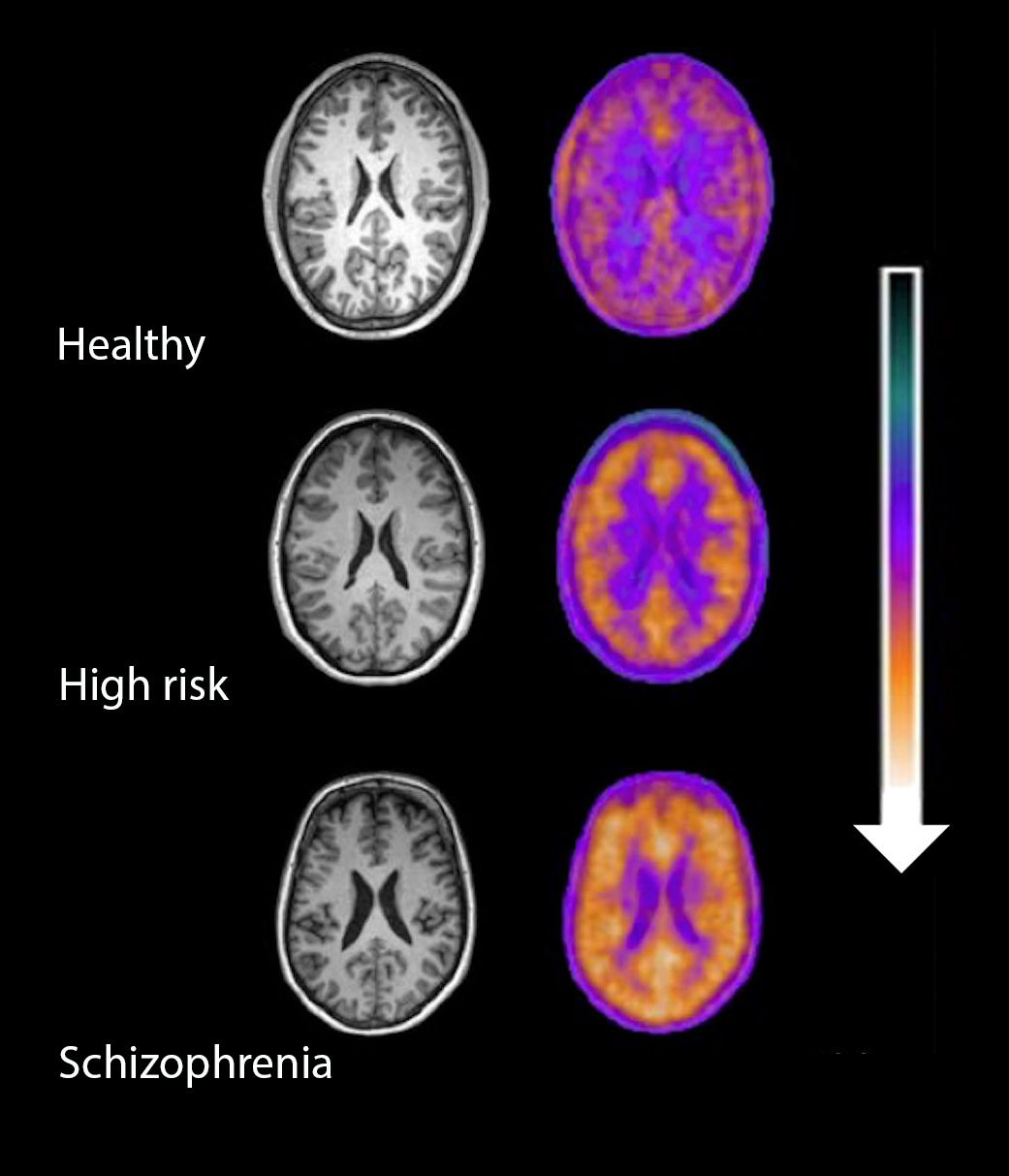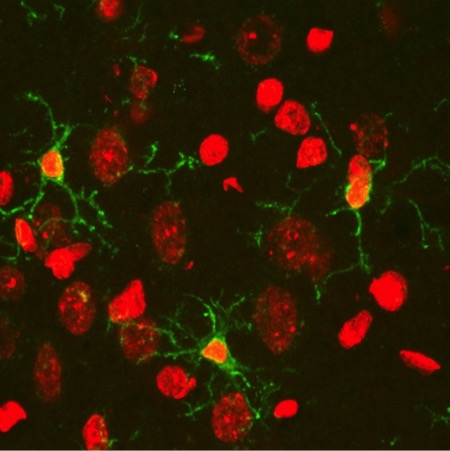By Helen Figueira
October 16, 2015
Time to read: 4 minutes
Susan Watts
A study, published today in the American Journal of Psychiatry, is the first to find that immune cells are more active in the brains of people at risk of schizophrenia as well as those already diagnosed with the disease.
The finding could completely change our current understanding of schizophrenia, raising the possibility that testing people most at risk of the disorder ahead of time could allow them to be treated early enough to avoid its most severe symptoms.

Researchers at the Medical Research Council’s (MRC) Clinical Sciences Centre (CSC), based at Imperial College London, in collaboration with colleagues at King’s College London used positron emission tomography (PET) scans to measure levels of activity of immune cells in the brain. These cells, known as microglia, respond to damage and infection in the brain, and are also responsible for rearranging the connections between brain cells so that they work as well as possible; a process known as pruning.
The team tested a group of 56 people including those already diagnosed with schizophrenia, those at risk of the disease and those with no symptoms or risk of the disorder. They found that activity levels of microglia in the brain increased according to the severity of symptoms in people with schizophrenia and that people with diagnosed schizophrenia had high levels of activity of these immune cells in their brain.

Peter Bloomfield, lead author of the study who was co-supervised by Vincenzo De Paola and Oliver Howes at the CSC, said: “Our findings are particularly exciting because it was previously unknown whether these cells become active before or after onset of the disease.
“Now we have shown this early involvement, mechanisms of the disease and new medications can hopefully be uncovered.”
Dr Oliver Howes, head of the psychiatric imaging group at the MRC Clinical Sciences Centre, added: “Schizophrenia is a potentially devastating disorder and we desperately need new treatments to help sufferers, and ultimately to prevent it.
“This is a promising study as it suggests that inflammation may lead to schizophrenia and other psychotic disorders. We now aim to test whether anti-inflammatory treatments can target these. This could lead to new treatments or even prevention of the disorders altogether.”
Dr Vincenzo De Paola, head of the neuroplasticity and disease group at the MRC Clinical Sciences Centre and co-supervisor of Peter Bloomfield said: “One challenge we face now is to understand how exactly increased inflammation contributes to the disorder: is microglial activation a cause or effect? This is still not clear.
“More work is also needed to determine whether potential synaptic pruning defects are involved in the disease, a possibility we are currently testing in the laboratory.”
Professor Hugh Perry, Chair of the Neuroscience and Mental Health Board at the MRC, added “Schizophrenia, like other mental health disorders, is a complex disease that we know is caused by an interplay of genetic, behavioural and other contributing factors.
“This study adds to a growing body of research that inflammation in the brain could be one of the factors contributing to a range of disorders – including Alzheimer’s, schizophrenia and depression – and with this new knowledge comes the hope of life-changing treatments.”
The research was funded by the MRC and King’s College London, and was performed in collaboration with the Imanova Centre for Imaging Sciences.
For further information, get in touch:
Susan Watts
Head of Communications and Public Engagement
07590 250 652
0208 383 8247